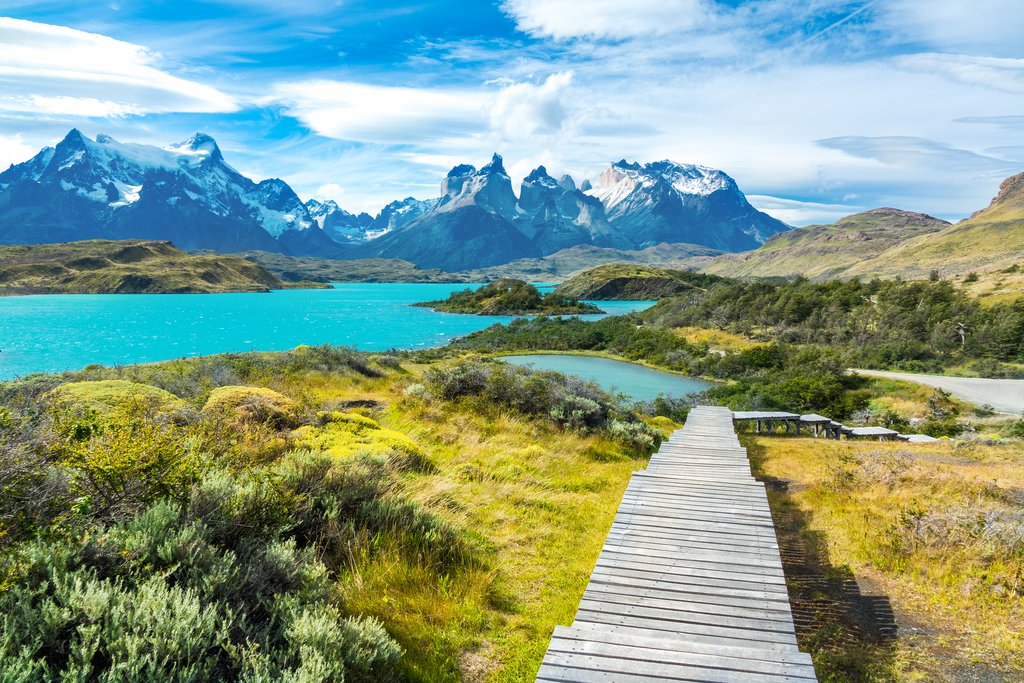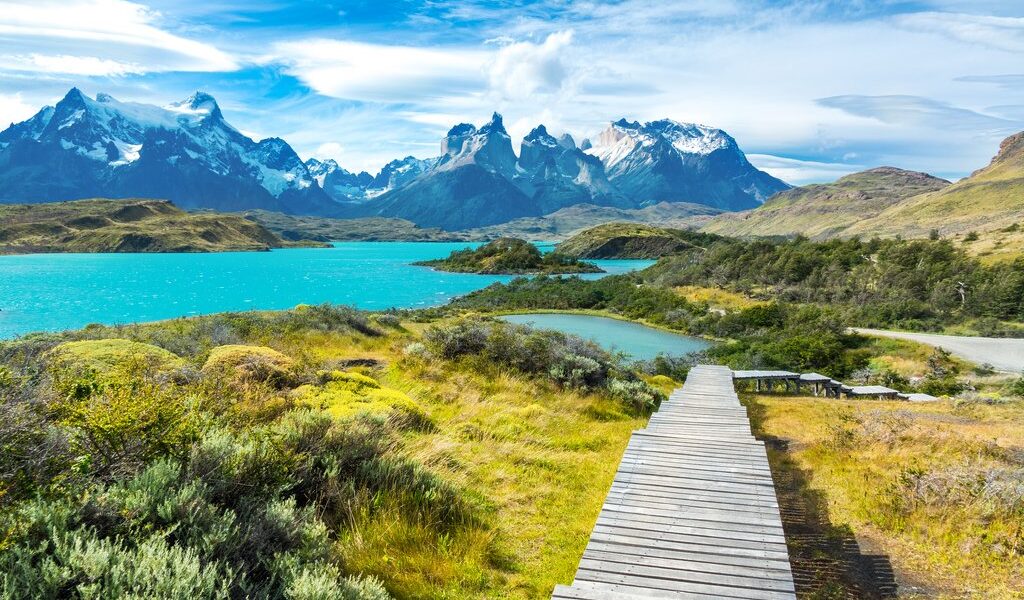
January is prime summer season in Chile with great weather, longer days for enjoying outdoor activities, and, yes, more tourists—especially in Patagonia. Locals, meanwhile, head to the beaches while fun celebrations take place all over the country. This monthly guide will tell you what to do and where to go (and how to beat the crowds).
## Chile in January: A Comprehensive Guide
January in Chile is a truly special time, a period when the country bursts into life with the warmth of summer. It’s no surprise that this month attracts visitors from every corner of the globe, eager to experience the diverse landscapes and vibrant culture that Chile has to offer. However, due to Chile’s unique geographical characteristics – its incredibly long and narrow shape, stretching over 2500 miles – the weather can vary significantly depending on where you are. Therefore, understanding these regional differences is crucial for planning the perfect Chilean adventure.
As a general rule, the further north you venture, the warmer the temperatures will be. In Santiago, for example, the summer heat can be quite intense, with daily highs often reaching into the 80s Fahrenheit. The sun beats down, and the city buzzes with energy, a testament to the peak of the tourist season. Moving further north, the Atacama Desert presents a different kind of heat. Here, daytime highs can soar into the 90s Fahrenheit, a dry, intense heat that contrasts sharply with the plummeting temperatures at night, which can drop down to the 40s. This dramatic temperature swing is a characteristic of desert climates, and visitors should be prepared for both extremes. Interestingly, the Atacama Desert may also experience the Altiplanic Winter in January. This phenomenon brings moist air from the east, leading to occasional periods of unsettled weather, including heavy rains, dramatic thunderstorms, and even the possibility of snowfall in the higher altitudes.
Along the Chilean coast, you can expect more moderate and agreeable weather conditions. Mild temperatures prevail, often accompanied by refreshing breezes that provide a welcome respite from the inland heat. It’s an ideal time to explore the coastal cities and towns, enjoying the beaches and the vibrant maritime culture.
Heading south, the climate shifts again, becoming noticeably cooler. In Patagonia, daily high temperatures typically linger in the 50s Fahrenheit. This makes January an ideal time to explore the region’s stunning natural wonders, including popular destinations like Punta Arenas, Puerto Natales, Torres del Paine National Park, Isla Magdalena, and the breathtaking Tierra del Fuego. However, it’s important to remember that the Patagonian summer is also when the region’s infamous winds tend to pick up. These strong winds can add an extra element of challenge to outdoor activities, so it’s essential to be prepared with appropriate clothing and gear. Regardless of where you plan to travel within Chile, it’s always a good idea to pack layers of clothing and light outdoor gear to accommodate the varying weather conditions. This will ensure that you’re comfortable and prepared for anything the Chilean climate might throw your way.
The summer months in Chile, offering the most favorable climate for a wide range of outdoor adventures, naturally attract larger crowds. This is especially true as Chile’s popularity as a tourist destination continues to grow. Consequently, travel costs can be higher during this peak season, not only due to increased demand but also because of the transportation expenses involved in traversing a country that stretches an impressive 2653 miles from north to south.
Given the high demand and the logistical challenges of traveling in Chile, it’s highly recommended to make your travel arrangements several months in advance for a January trip. This is particularly important if you plan to visit popular destinations like Southern Patagonia, which tend to fill up quickly. Many Chileans also take advantage of the summer weather to escape the cities and head to the beaches and lakes for some much-needed rest and relaxation. In contrast, many urban residents leave Santiago this time of year, so it’s a great time to visit the capital, as hotel rates may be lower and the city is more relaxed.
January offers long daylight hours, especially in Patagonia, where you can enjoy approximately 15 hours of daylight. This extended daylight provides ample time for exploring the region’s natural beauty. A major attraction in Patagonia is Torres del Paine National Park, which is in full bloom during this time of year. The landscapes are lush and green, and the park is teeming with wildlife. While you’ll have a good chance of spotting various animal species, it’s worth noting that the increased crowds may drive some wildlife to less-visited areas of the park. Alternatively, the Chilean Lake District in Northern Patagonia offers a different kind of charm. Here, you’ll find scenic volcanoes, excellent hiking trails, and charming towns like Puerto Varas, which boasts a distinctive German heritage.
For a less-traveled and more adventurous Patagonian experience, consider embarking on a summer road trip along the Carretera Austral. This iconic Patagonian route stretches a remarkable 769 miles (1,240 km) from Puerto Montt to Villa O’Higgins. It’s a journey along a partially-paved, yet largely dirt-and-gravel road that winds through stunning landscapes, including lakes, lush jungles, magnificent glaciers, natural hot springs, snow-capped peaks, and vast, open valleys. Another great option for escaping the crowds is to explore the remote Southern Fjords.
If you prefer warmer weather, consider heading north to explore the beaches along the Chilean coast, the renowned wine valleys, and the otherworldly landscapes of the Atacama Desert. Each of these regions offers a unique and unforgettable experience.
There’s a wide range of activities to enjoy throughout Chile, particularly during the summer months. Patagonia is renowned for its exceptional day hikes, multi-day treks, glacier boat tours, and opportunities to encounter playful penguins. Adventure enthusiasts seeking adrenaline-pumping activities like white-water rafting, zip-lining, skydiving, and horseback riding will find plenty of options in the Lake District.
Santiago and Valparaiso provide rich cultural experiences, with trendy restaurants, fascinating museums, and world-renowned street art. The nearby city of Viña del Mar offers vibrant nightlife and beautiful beaches for sunbathing. Great surf breaks can be found along Chile’s northern coast, all the way up to Arica, near the border of Peru. The Elqui Valley and the Atacama Desert offer guided tours to explore geysers, sand dunes, and astronomy observatories, as well as health and wellness opportunities like ayurvedic treatments and yoga classes.
January is also a month filled with exciting events and festivals throughout Chile:
* **Ruta del Huemul:** Held during the last week of January, this two-day community hike traverses the Reserva Nacional Tamango near Cochrane. Advance reservations are required to participate.
* **The Love Parade:** This annual celebration of love attracts thousands of people to Santiago every year, featuring colorful floats, live music, and a festive atmosphere with food and drink.
* **Feast Day of San Sebastian:** Located in Yumbel, this festival celebrates one of Chile’s patron saints, drawing thousands of pilgrims and devotees. The event begins with a lavish procession, where onlookers are adorned in red and yellow, the colors of the patron saint.
* **Santiago a Mil:** Each year in January, Latin America’s largest theater festival brings international acts to the streets of Santiago, offering a diverse range of performances and cultural experiences.
* **Semanas Musicales:** Throughout the month in the Lake District town of Frutillar, you can find prestigious international acts spanning genres from classical to hip-hop, performing at the town’s Teatro de Frutillar.
* **Brotes de Chile:** One of Chile’s biggest folk festivals takes place during the second week of January in Angol, showcasing traditional dance and crafts.
* **Muestra Cultural Mapuche:** This six-day festival in the Lake District celebrates Mapuche culture, featuring artisans, indigenous music, and ritual dances.
(Word Count: 1237)
B-295

